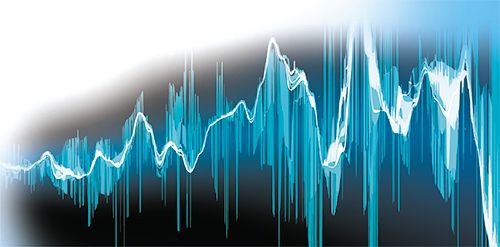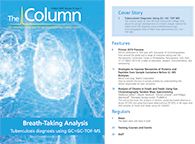Pulse Flow Modulation for Multidimensional GC
Researchers from the University of Washington, USA, have developed an ultrafast separation using pulse flow valve modulation to enable high peak capacity in GC×GC and GC×GC×GC.
Photo Credit: beholdereye / stock.adobe.com

Researchers from the University of Washington, USA, have developed an ultrafast separation using pulse flow valve modulation to enable high peak capacity in comprehensive two-dimensional gas chromatography (GC×GC) and threeâdimensional gas chromatography (GC×GC×GC) (1).
With the advent of multidimensional GC, increased peak capacity and chemical selectivity became available to researchers who required significantly more analytical clout in the laboratory. However, the cost of this extra power came in the form of a high likelihood of unresolved analytes. While this could be overcome by adjusting the sample throughput cycle, in cases where multiple samples required analysis, it was not ideal to have increased run times and cool down times.
The problem is further exacerbated when researchers seek out increased selectivity from higher order instruments, such as GC×GC×GC systems; the trade-off between increased selectivity provided by the three separation dimensions and peak capacity reaching new heights.
One promising area of research to address these challenges is modulation technology, with a recent report using pulse flow valve modulation to produce more optimal separation conditions (2).
Building upon this report, researchers used pulse flow valve modulation with GC×GC and utilized the results to advise the use of pulse flow valve modulation in GC×GC×GC.
The results of the research suggest that using a high temperature diaphragm valve modulator in conjunction with a recently introduced pulse flow valve modulator enables researchers to take advantage of the increased selectivity of GC×GC×GC instruments while achieving peak capacity production approaching 1000 peaks/min.
Researchers also indicated that future studies will be focused on applying these instrumental improvements with mass spectral data to create an ultra-fast four-dimensional data structure to address complex separation mixtures.
References
- H.D. Bahaghighat et al., J. Chroma. A1573, 115–124 (2018).
- C.E. Freye et al., Talanta117, 142–149 (2018).

Accelerating Monoclonal Antibody Quality Control: The Role of LC–MS in Upstream Bioprocessing
This study highlights the promising potential of LC–MS as a powerful tool for mAb quality control within the context of upstream processing.
Using GC-MS to Measure Improvement Efforts to TNT-Contaminated Soil
April 29th 2025Researchers developing a plant microbial consortium that can repair in-situ high concentration TNT (1434 mg/kg) contaminated soil, as well as overcome the limitations of previous studies that only focused on simulated pollution, used untargeted metabolone gas chromatography-mass spectrometry (GC-MS) to measure their success.
Prioritizing Non-Target Screening in LC–HRMS Environmental Sample Analysis
April 28th 2025When analyzing samples using liquid chromatography–high-resolution mass spectrometry, there are various ways the processes can be improved. Researchers created new methods for prioritizing these strategies.
Potential Obstacles in Chromatographic Analyses Distinguishing Marijuana from Hemp
April 28th 2025LCGC International's April series for National Cannabis Awareness Month concludes with a discussion with Walter B. Wilson from the National Institute of Standard and Technology’s (NIST’s) Chemical Sciences Division regarding recent research his team conducted investigating chromatographic interferences that can potentially inflate the levels of Δ9-THC in Cannabis sativa plant samples, and possible solutions to avoid this problem.

.png&w=3840&q=75)

.png&w=3840&q=75)



.png&w=3840&q=75)



.png&w=3840&q=75)











